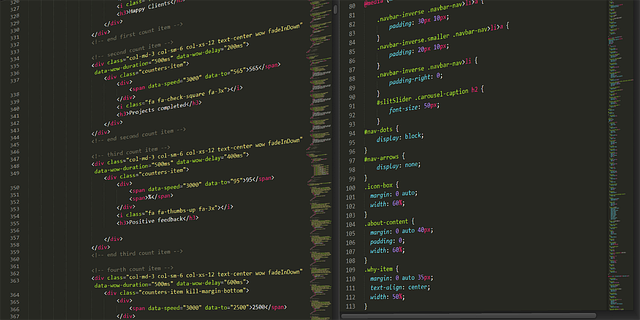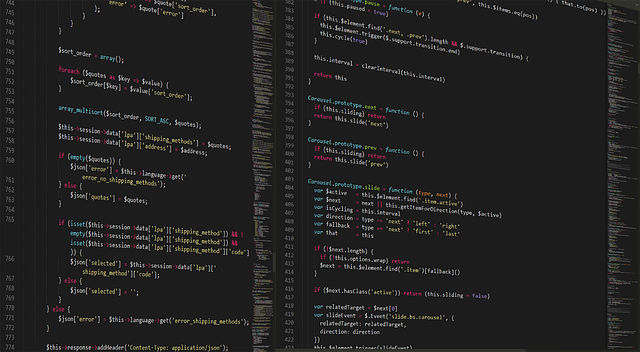In today's digital age, accessible and affordable website development has democratized online presence, enabling businesses of all sizes to establish a strong digital footprint. Modern technologies like pre-built templates, open-source software, and cloud-based hosting significantly reduce costs while maintaining functionality and aesthetics. By optimizing design, leveraging community-driven code, and strategically outsourcing, businesses can launch robust online platforms without excessive investment. Balancing in-house development with outsourcing allows for direct control and cost savings, catering to project-specific needs. Effective website design focuses on clarity, simplicity, and content optimization, while cost-efficient hosting ensures scalability. Real-life success stories demonstrate that affordable web solutions drive growth across industries, proving accessibility is no longer a barrier to achieving digital goals.
In today’s digital landscape, having an online presence is paramount for businesses and individuals alike. However, the cost associated with website development can often be a significant barrier. This article explores the concept of affordable website development, providing insights into strategies, tools, and approaches that make building a site more accessible. From understanding the current market dynamics to case studies of successful budget-friendly launches, we unlock the secrets to creating high-quality websites without breaking the bank.
Understanding Affordable Website Development: Unlocking Digital Accessibility

In today’s digital age, having a website is no longer a luxury but a necessity for businesses and individuals alike. However, the cost of website development has often been seen as a significant barrier to entry. Affordable Website Development aims to democratize access to online presence by making high-quality web creation more accessible and economical. This approach doesn’t compromise on functionality or aesthetics; instead, it leverages modern technologies and streamlined processes to deliver professional results at a fraction of the traditional cost.
Understanding affordable website development is about recognizing that there are numerous ways to create a robust and visually appealing online platform without breaking the bank. This includes utilizing pre-built templates, open-source software, and cloud-based hosting solutions. By embracing these strategies, businesses can focus more on their core competencies and less on the financial burden of web creation. Ultimately, this unlocks digital accessibility, enabling folks from all walks of life to establish a strong online presence.
The Current Landscape of Web Development Costs

In today’s digital era, the landscape of website development has evolved significantly, offering a diverse range of options for businesses and individuals seeking an online presence. While high-end, custom-built websites were once the norm, driven by complex coding and expensive design, the current market is characterized by a surge in affordable web development solutions. This shift is largely due to advancements in technology and the emergence of user-friendly, drag-and-drop website builders, which empower non-technical users to create professional-looking sites without breaking the bank.
Traditional web development often carried substantial costs, with pricing structured around time-based quotes or intricate project scopes. However, modern approaches have democratized access to online platforms, allowing startups and small businesses to compete alongside established enterprises. The rise of ready-made templates, integrated design tools, and scalable hosting plans has dramatically reduced the barrier to entry for website creation. As a result, many businesses can now launch their online presence quickly and efficiently without incurring hefty fees associated with conventional development methods.
Strategies for Reducing Website Development Expenses

Reducing expenses in website development is a strategic process that can help businesses create robust online platforms without breaking the bank. One effective approach is to simplify the design and functionality. By opting for a clean, minimalist aesthetic and essential features, you can dramatically cut costs associated with complex layouts and advanced interactive elements. Another strategy involves leveraging ready-made templates or open-source software, which offer significant savings compared to custom development. These options provide a solid foundation, allowing developers to focus on unique branding and specific functionalities.
Additionally, outsourcing to freelance developers or agencies specializing in budget-friendly solutions can be a game-changer. This approach enables access to skilled professionals without the overhead costs of full-service agencies. Negotiating clear project scopes and defining milestones with predetermined pricing structures are essential practices to ensure transparency and prevent budget overruns. Utilizing content management systems (CMS) like WordPress or Drupal also streamlines the development process, as these platforms offer extensive features through modular additions, reducing the need for custom coding.
Open-Source Platforms and Their Role in Cost-Effective Development

Open-source platforms have played a significant role in revolutionizing website development, offering affordable and accessible solutions for businesses and individuals alike. These platforms provide a wealth of tools and resources that can cut down on development costs significantly. By leveraging the power of community-driven code, developers can build robust and dynamic websites without incurring the usual expenses associated with proprietary software.
One of the key advantages is the availability of pre-built components and templates, which streamlines the development process. Many open-source platforms offer user-friendly interfaces, making it easier for non-technical users to create and customize their online presence. This democratization of website creation has led to a surge in small businesses and startups launching their digital endeavors without breaking the bank.
Outsourcing vs. In-House Development: Finding the Right Balance

When considering website development, businesses often grapple with the choice between outsourcing and in-house development. Outsourcing allows companies to leverage expert skills from remote specialists, potentially saving costs and accelerating timelines. It’s particularly appealing for startups or small businesses with limited resources and specific project needs. However, relying on external developers may introduce communication barriers and a lack of direct control over the development process.
In contrast, in-house development offers better control and transparency but can be more expensive and time-consuming. Hiring an in-house team requires significant upfront investment in recruitment, training, and setup. Yet, it ensures consistent quality, faster iteration, and easier integration with internal systems. Striking the right balance often involves evaluating project scope, budget, and long-term goals, determining whether to outsource non-core functions or bring expertise in-house for a more strategic approach to website development.
Tips for Creating a Budget-Friendly Website Design

When creating a budget-friendly website design, it’s essential to prioritize needs over wants. Start by defining your core objectives and target audience. This clarity will guide your choices in terms of layout, functionality, and features. Opt for simple yet effective designs that convey information efficiently. Using readily available templates or open-source platforms can significantly reduce costs without compromising quality.
Additionally, focus on content as a key component. High-quality, optimized content not only engages visitors but also improves search engine rankings. Utilize user-generated content where possible to save on production costs. Keep the design clean and uncluttered, using whitespace effectively to enhance readability. Choose cost-effective hosting solutions and consider cloud-based options for their scalability and flexibility, ensuring your website development stays within budget while delivering a professional appearance.
Case Studies: Success Stories of Affordable Website Launches

In the competitive digital landscape, affordable website development has emerged as a game-changer for businesses and entrepreneurs. Many successful companies have launched their online presence on a budget, proving that cost-effective solutions can drive significant growth. Case studies of such ventures offer valuable insights into how accessible web development has become. For instance, a small local bakery in a bustling city centre managed to create an engaging website showcasing their unique recipes and delivery options without breaking the bank. This allowed them to reach a wider audience, increase online sales, and even expand their services.
Another inspiring story is that of a non-profit organisation dedicated to environmental conservation. They developed an interactive website to raise awareness about their initiatives and attract volunteers. By leveraging affordable hosting and open-source content management systems, they created a dynamic platform that became a hub for like-minded individuals worldwide. These real-life examples demonstrate that with the right strategies and tools, effective website development is achievable for any scale of business or budget.
